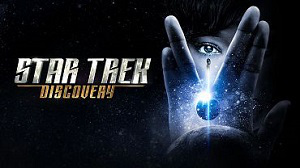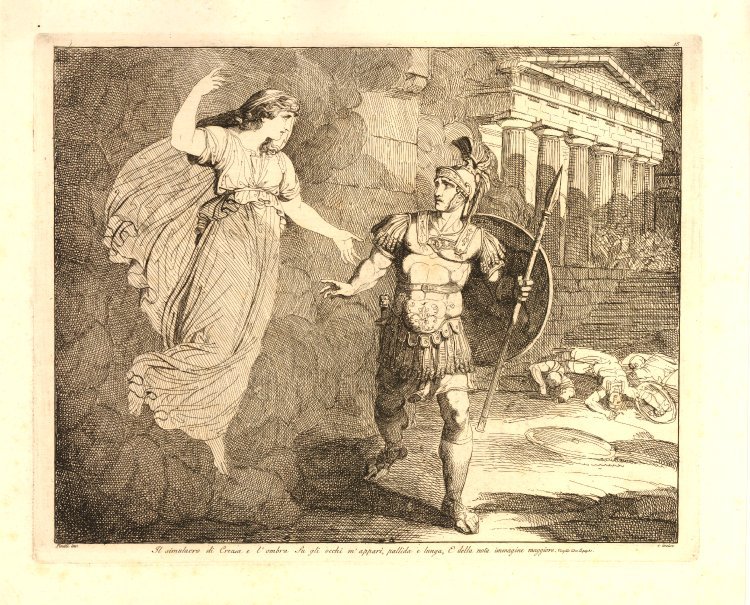Why do people fawn so?
 Star Trek: Discovery is not good television. The opening two episodes were a mishmash of ideas, retconning, reinvention of things which aren’t broken in the Star Trek universe (the Klingons have suddenly become Uruk-hai), melodrama, and lots of effects. But it looks pretty, and performances are excellent. In today’s media, that goes a long way to masking shit. In fact, modern Hollywood actually relies on aesthetic now as a template.
Star Trek: Discovery is not good television. The opening two episodes were a mishmash of ideas, retconning, reinvention of things which aren’t broken in the Star Trek universe (the Klingons have suddenly become Uruk-hai), melodrama, and lots of effects. But it looks pretty, and performances are excellent. In today’s media, that goes a long way to masking shit. In fact, modern Hollywood actually relies on aesthetic now as a template.
At least the second episode did improve enough on the awful pilot to suggest that the creators were finding their feet, and it was just a matter of time before they hit the ground running. But episode 3 – which, somehow, is being lauded by many – is a supremely stupid 40-minutes of television, and surpasses anything bad that’s ever happened in the Trek universe before (hello, Star Trek V: The Final Frontier; hello, Star Trek: Nemesis; hello, JJ Abrams). Seth McFarlane’s Trek-like parody, The Orville, also debuted recently, and it’s nowhere near as funny as this, and yet more Trek.
Let’s look at Ten Supremely Stupid Things from Discovery episode 3.
10. Spoof Trek?
Michael Burnham is being transported via shuttle to her prison sentence along with three other prisoners. Microscopic aliens – the sort that are always derailing everyday routines in Trek – eat away at the shuttle. The pilot goes out to clean them up. The other prisoners grow agitated at the possible danger. One shouts that the pilot should get back in the ship. Another says the pilot is taking care of the situation.
And then the pilot floats past the window, disconnected from her tether.
This is up there with any joke told in Flying High, The Naked Gun, or movies of that ilk. Maybe the writers were trying to communicate irony in the dangers of space, but only succeeded in hitting the height of absurdity.
9. Black Ops Not So Black
There’s crew on the Discovery wearing black Starfleet insignias. The prisoners remark that they’ve never seen black badges before. Because, obviously, when you’re covert, you advertise it by wearing a badge that tells everybody you’re not part of the norm. I hear the CIA walk around with CIA badges on their lapels, too.
8. How Big is this Mess?
Michael Burnham and the other prisoners are taken to the Mess to eat, amongst the rest of Discovery’s crew. The other prisoners – who’ve had antagonism with Burnham building – attack Burnham. She shows off her Vulcan Karate Kid moves, and the Chief of Security, Commander Landry, arrests the situation, and orders security to take the rest of the prisoners to the brig.
Um, what now? Why didn’t the damn prisoners go to the brig in the first place? What were they ever allowed to fraternise with the crew? I kept waiting for this to be revealed as some design of Captain Lorca but, nope, it’s just standard procedure apparently that prisoners (especially dangerous ones) should eat with the crew, the only qualification being that Commander Landry was told the prisoners have to eat. Because, you know, you can’t bring food to the brig.
7. Does Anybody Know Who I Am?
Michael Burnham is this infamous mutineer responsible for the deaths of over 8,000 Starfleet crew, and yet nobody seems to recognise her. Her bunk-mate, Sylvia Tilley, comes in and remarks that the only Michael Burnham she knows of is the mutineer. The head of the science department, Paul Stamets, remarks that he thought Burnham was a Vulcan. How does nobody in Starfleet know who Michael Burnham is given the gravity of her crimes? Do they not watch the news? Is there a parade of Michael Burnhams marching around that they’re all too hard to keep track of?
6. How Bad Does My Breath Smell?
Secure doors are now unlocked with breath scans. Breath scans. Stop to think about that that. You breathe on something, it identifies you, and the door opens. I suppose next they’ll be bringing in flatulence scans.
I’ll give the earlier series some leeway for the use of certain technology in security scans, because they were trying to project the future. But, really, the future is scanning somebody’s breath? In a universe which has transporter technology and DNA scanning, you’d think people could simply be scanned for their identity.
But to make matters worse, Michael Burnham gathers some saliva on a kerchief from her bunk-mate Sylvia Tilly’s drool as she’s sleeping. Burnham then breathes on the kerchief, over the drool, to fool the breath scan and get into the science department.
I’m stupefied. A top secret project is secured with a scan that can be overridden with this sort of ease? You know, before they implement security systems, they test them for vulnerabilities. I guess nobody ever thought of this.
5. Don’t Speak
Michael Burnham joins an away team who fly over to their sister ship, the USS Convenience (well, that’s what they should’ve called it), to investigate what happened to the crew and why the ship has gone dark. They find dismembered and disfigured crew. All the doors are ruptured, like something burst through them. Tilly sees somebody in the shadows and orders them to emerge. A Klingon comes out and tells them, ‘Ssshh.’
A Klingon. Sshhhes.
I get it, I get it – the Klingon is paralyzed with such fear, that he hid, and now when he comes out he gives them this uncharacteristic greeting. This despite spending two prior episodes in this universe getting to know the Klingons as fearless and gloriously welcoming death in battle.
But this one says, ‘Ssshh.’ Maybe he was about to sing the Bjork song, ‘Ssh’, and got interrupted.
To top it all, a space monster – possibly a goat – attacks the Klingon and kills him.
4. When is a Door Not a Door?
The away team run from the goat and charge into Engineering through a ruptured door. Stamets hits a panel, and another door closes over the ruptured door.
Why didn’t the ship’s crew close this door if there was another door to close? And what good is it closing a door when every other door is ruptured? Hasn’t it been established a closed door means nothing? I guess it slows the goat down. You know how these space goats are.
As an aside, how did the Klingons get aboard the ship? They seemed to beam. But the away team couldn’t beam and needed a shuttle. Do the writers consult one another when writing scenes?
3. Space Dust
Michael Burnham confronts Captain Lorca about his project. Captain Lorca introduces Burnham to fairy dust – oh, well, it’s the dust of some quantum technobabble about the way space exists which allows them to travel anywhere in the universe instantaneously.
This is, quite possibly, the most objectionable thing that’s happened in the three episodes of Discovery. We’ve had collectively twenty-eight seasons of Star Trek (that’s 703 episodes), ten movies (not including, as Spook has christened it, JJ Trek), and suddenly, we have this fairy dust
It’s symptomatic of the way co-creator and writer Alex Kurtzman treated Trek in the JJ Abrams’ beyond woeful Star Trek: Beyond. To further a plot point in that movie, we introduce transwarp beaming – the ability to beam anywhere in the universe, which actually makes starships redundant. But that doesn’t matter. Don’t think about it. Don’t examine it. Because it’s existing to serve this single plot point. And then we’ll never bring it up again.
This is not to say you can’t expand on existing Trek technology (trecknology – has anybody coined that?), but this isn’t an expansion, but a reinvention that shatters the existing parameters of how the Star Trek universe functions, and how that functionality shapes (and can constrict) plotting. Instead of operating within that canon, just make up something new because it’s convenient and forget about it when it’s not.
2. Fan Service
Burnham talks about how her foster mum used to say that up was down and blah blah blah – stuff that’s meant to impress you about the scope of this character’s thinking. Tilly remarks the sentiment is beautiful and asks Burnham what her mother’s name was. Burnham says, ‘Amanda.’
Okay, first, let’s look at the lack of logic of this question: it would be like me saying, ‘The weather presenter it’ll be fine and sunny tomorrow’, and then you saying, ‘What is the weather presenter’s name?’ There’s no causal link. Why would you ask the name? How does that add value for Tilly? Does it make Burnham’s foster mum more real?
No. It is just some clunky and unnecessary fan service.
Finally, in all the Trek we’ve seen, even traipsing over into the JJ universe, Spock never mentioned his human stepsister? He comments on human behavior so often throughout The Original Series and their movies – surely human behaviour wouldn’t mystify him as much if he’d grown up with a human woman. If you extrapolate this further, Sarek had no problem depositing Burnham with Starfleet, but had issues with Spock joining Starfleet?
My last question on this, did any of the writers watch The Original Series?
1. Here, Kitty Kitty
So Captain Lorca taps on the window and the space goat comes thundering in and thuds into the window, then bounces off – either the window is made of some tough transparent aluminum, or it’s enforced with force fields.
Lorca turns, offers a mysterious smile – I can only imagine pets are prohibited on the Discovery – and walks out, because we find out he’s evil! Evil! EVIL!
This is not Trek. It’s some conspiracy-wrapped war mystery vented through Star Trek branding to tell a story that probably doesn’t need to be told – at least not in this way. There’s none of the Star Trek morality infused within the show. And while early press boasted the show would go back to its exploratory roots, it’s hard to see where exactly that’s happening. Even Deep Space Nine – which was the most unTrek Trek – was still Trek.
Once Kurtzman was announced to be at the helm of the series, we went to Orange Alert. His work on JJ Abrams’ Star Treks and Andrew Garflield’s Spider-Man movies was not flattering. The exit of Bryan Fuller – a co-creator, and an alumni of contemporary Trek – suggests there might’ve been creative issues.
Discovery sits well in the JJ Trek universe – invent whatever’s needed to serve the plot, use coincidences to drive the story, and throw a lot of flash at the screen when in doubt.
As legitimate Trek, it falls as grotesquely short as a space goat going through a second door.
Special thanks to Spook and Chief for their observations as we watched this episode.





